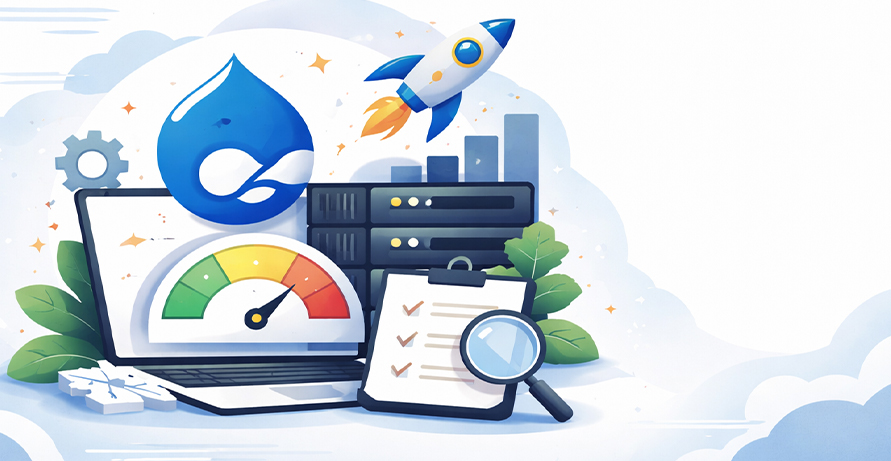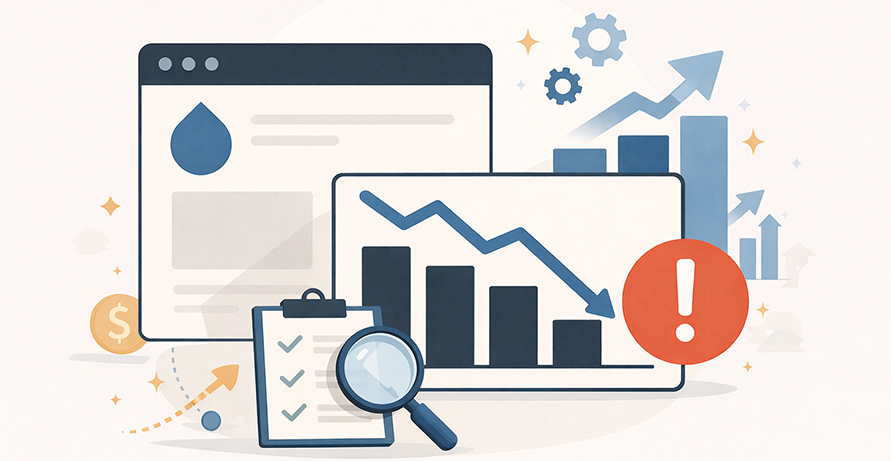B2B vs B2C E-Commerce: What’s the Difference in Strategy?

E-commerce has evolved far beyond simple online retail. Today, both Business-to-Business (B2B) and Business-to-Consumer (B2C) platforms are driving growth in the U.S. digital economy. However, their audiences, purchasing behaviors, and operational needs are very different.
Understanding the distinction between these two models is crucial for building a successful e-commerce strategy. This blog breaks down the core differences between B2B and B2C e-commerce in terms of buyer psychology, sales processes, marketing approaches, and technology choices.
At Anchor Points, we help organizations design tailored e-commerce solutions that align with their market type, ensuring seamless user experiences, scalable infrastructure, and measurable ROI.
Understanding the Core Difference
At the most basic level:
- B2B e-commerce refers to transactions between businesses (for example, a manufacturer selling parts to a distributor).
- B2C e-commerce involves businesses selling directly to end consumers (such as an online clothing brand).
While both models use digital platforms to sell products or services, their sales cycles, pricing models, and customer relationships differ significantly.
B2B: Focuses on long-term relationships, bulk orders, and negotiation-based pricing.
B2C: Focuses on convenience, impulse buying, and emotional engagement.
The success of each depends on aligning your digital strategy with your target audience’s behavior and expectations.
1. Audience and Buyer Behavior
B2B
B2B buyers are usually professionals making purchasing decisions for their company. They conduct in-depth research, compare suppliers, and expect transparency in pricing and capabilities. The buying process often involves multiple stakeholders and approvals.
Key Traits of B2B Buyers:
- Rational, data-driven decision-making
- Longer consideration and evaluation periods
- Recurring purchases and high-value orders
- Emphasis on efficiency and reliability
B2C
B2C buyers are individuals purchasing products for personal use. Their decisions are more emotional, influenced by marketing, price, convenience, and brand perception.
Key Traits of B2C Buyers:
- Emotion-driven decision-making
- Shorter buying cycles
- One-time or occasional purchases
- Focus on experience, price, and ease of use
How Anchor Points Helps:
We analyze customer personas and behavior to design e-commerce platforms that match user intent. Whether your goal is relationship-based B2B engagement or fast B2C conversions, we tailor digital experiences that convert effectively.
2. Marketing Approach and Messaging
B2B
B2B marketing focuses on educating and building trust. Strategies revolve around providing value through detailed content and technical expertise rather than emotional appeal.
Effective B2B Marketing Channels:
- LinkedIn and industry forums
- Email marketing with case studies or whitepapers
- SEO-driven educational content (blogs, guides, webinars)
- Account-based marketing (ABM) for targeted outreach
B2C
B2C marketing emphasizes brand appeal and emotional connection. Campaigns are shorter, more visual, and often focused on storytelling and promotions.
Effective B2C Marketing Channels:
- Social media advertising (Instagram, TikTok, Facebook)
- Influencer marketing
- Search ads and remarketing
- Flash sales, discounts, and loyalty programs
How Anchor Points Helps:
We craft customized digital marketing strategies for both models. Our team develops B2B content funnels that nurture leads over time, as well as B2C campaigns that capture attention and drive instant sales.
3. Sales Cycle and Purchasing Journey
B2B
B2B sales cycles are longer and more complex. They often involve product demos, contract negotiations, and multiple approval layers. The goal is to build long-term partnerships.
Typical B2B Sales Features:
- Custom pricing and quotations
- Purchase orders and invoicing systems
- Contract-based transactions
- Integration with ERP and CRM tools
B2C
B2C transactions are quick and seamless. Consumers expect instant checkout, fast shipping, and flexible payment options. The focus is on creating a frictionless buying experience.
Typical B2C Sales Features:
- One-click checkout and guest logins
- Product recommendations
- Discounts, coupon codes, and upselling
- Mobile-friendly design and payment integrations
How Anchor Points Helps:
We build optimized sales funnels suited to each model. For B2B, we integrate quoting, bulk order, and account management features. For B2C, we design fast, mobile-responsive interfaces that reduce cart abandonment and enhance conversions.
4. Pricing and Payment Models
B2B
B2B pricing is often negotiated and varies based on order volume, contracts, and customer history. Payment terms are also more flexible, including credit, purchase orders, and delayed payments.
B2B Pricing Models:
- Tiered pricing by volume
- Contractual pricing
- Subscription-based B2B SaaS models
- Quotation-based custom pricing
B2C
B2C pricing is fixed and transparent, with frequent discounts or seasonal offers to attract customers. Payment methods are straightforward, typically processed through credit cards or digital wallets.
B2C Pricing Models:
- Flat-rate retail pricing
- Discount promotions
- Bundling and loyalty programs
- Subscription models for repeat buyers
How Anchor Points Helps:
We help businesses configure pricing automation and payment gateways that suit their target audience. Our e-commerce developers implement flexible pricing structures and secure payment systems for both B2B and B2C environments.
5. Technology and Platform Choice
B2B
B2B platforms require robust backend systems to handle bulk orders, client-specific pricing, and complex workflows. Integration with CRMs, inventory management, and ERP systems is often essential.
Popular B2B Platforms:
- Magento (Adobe Commerce)
- Drupal Commerce
- Shopify Plus (for wholesale)
- Custom Laravel or React-based systems
B2C
B2C platforms focus on user experience, speed, and scalability. They need strong marketing integrations, responsive design, and intuitive navigation.
Popular B2C Platforms:
- Shopify
- WooCommerce
- BigCommerce
- Custom headless solutions (Next.js, React, or Vue)
How Anchor Points Helps:
We specialize in developing scalable e-commerce solutions that match your business model. Whether you need a complex B2B portal or a fast B2C storefront, we build and integrate everything from backend architecture to SEO-friendly frontends.
6. Customer Relationship and Retention
B2B
B2B success depends heavily on long-term client relationships and account-based service. Customer portals, personalized dashboards, and order histories are vital to retention.
B2B Retention Strategies:
- Dedicated account managers
- Automated reorder systems
- CRM-integrated follow-ups
- Value-added services (training, support, analytics)
B2C
B2C retention focuses on brand loyalty and repeat purchases. Loyalty programs, personalized offers, and subscription models play a big role.
B2C Retention Strategies:
- Personalized recommendations
- Loyalty and referral programs
- Consistent social engagement
- Post-purchase communication
How Anchor Points Helps:
We implement CRM and automation systems that support retention strategies. Our data-driven approach helps companies personalize customer journeys and sustain engagement across digital touchpoints.
Final Takeaways
The difference between B2B and B2C e-commerce is not just about who buys your product, but how they buy, why they buy, and what keeps them loyal. B2B e-commerce is relationship-driven, characterized by long sales cycles, negotiated pricing, and bulk orders that often require integration with CRM and ERP systems. In contrast, B2C e-commerce is emotion-driven, focused on quick conversions, fixed pricing, individual purchases, and marketing automation to engage customers instantly.
Each model demands its own digital strategy, technology stack, and marketing approach. Businesses that recognize and adapt to these differences can create e-commerce platforms that serve their customers more effectively, drive higher conversions, and ensure long-term growth.
How Anchor Points Can Help:
At Anchor Points, we design, develop, and optimize e-commerce platforms tailored to your audience—B2B or B2C. Our team aligns design, functionality, and automation with your growth goals, ensuring measurable ROI and long-term scalability.
Looking to enhance your e-commerce strategy? Contact Anchor Points today to schedule a consultation and discover how to create a high-performing online store that fits your market.
FAQs
Q1. Can one website serve both B2B and B2C customers?
Yes. Many businesses use hybrid e-commerce platforms that support both audiences with separate pricing, catalogs, and login portals.
Q2. Which e-commerce platform is best for B2B?
Magento and Drupal Commerce are excellent for complex B2B operations due to their flexibility and integrations.
Q3. What’s the biggest difference between B2B and B2C marketing?
B2B focuses on relationship-building and logic, while B2C marketing appeals to emotion and instant gratification.
Q4. Is personalization important for B2B e-commerce?
Absolutely. Personalized dashboards and pricing increase engagement and repeat orders in B2B environments.
Q5. How can automation improve B2B or B2C e-commerce?
Automation simplifies order tracking, invoicing, CRM updates, and marketing, reducing manual tasks and improving customer experience.








